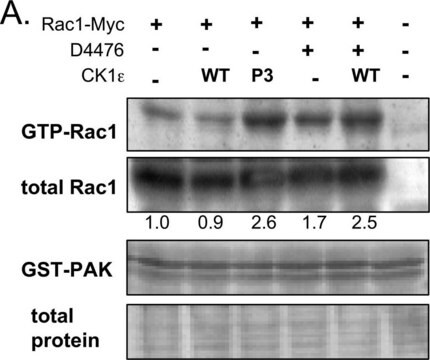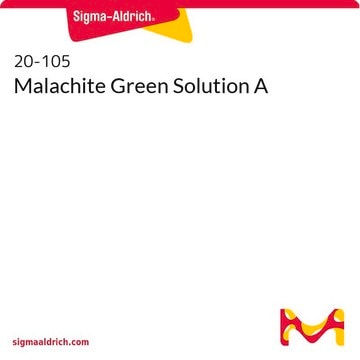MABT27
Anti-LIBS2 epitope (Integrin beta3 subunit) Antibody, clone ab62
clone ab62, from mouse
Synonim(y):
LIBS2 domain, Integrin, Integrin alphaVbeta3, LIBS2 epitiope
Wybierz wielkość
Wybierz wielkość
About This Item
Polecane produkty
pochodzenie biologiczne
mouse
Poziom jakości
forma przeciwciała
purified immunoglobulin
rodzaj przeciwciała
primary antibodies
klon
ab62, monoclonal
reaktywność gatunkowa
human
metody
flow cytometry: suitable
western blot: suitable
izotyp
IgG2aκ
Warunki transportu
wet ice
docelowa modyfikacja potranslacyjna
unmodified
informacje o genach
human ... ITGB3(3690)
Opis ogólny
Clone Ab62 is a monoclonal antibody that specifically recognizes the LIBS2 epitope in the C-terminal region of the extracellular domain of the beta3 subunit (Wiberzbicka-Patynowski, I., et al. (1999). JBC. 274(53):37809-37814).
Specyficzność
Immunogen
Zastosowanie
Cell Structure
Integrins
Jakość
Western Blot Analysis: 0.5 µg/mL of this antibody detected LIBS2 domain of integrin beta3 subunit in 10 µg of human platelets cell lysate.
Opis wartości docelowych
Other MW bands may vary or may be observed depending on lysate used and if the LIBS2 epitope is present in other proteins.
Postać fizyczna
Przechowywanie i stabilność
Komentarz do analizy
Human platelets cell lysate
Inne uwagi
Oświadczenie o zrzeczeniu się odpowiedzialności
Nie możesz znaleźć właściwego produktu?
Wypróbuj nasz Narzędzie selektora produktów.
Kod klasy składowania
12 - Non Combustible Liquids
Klasa zagrożenia wodnego (WGK)
WGK 1
Temperatura zapłonu (°F)
Not applicable
Temperatura zapłonu (°C)
Not applicable
Certyfikaty analizy (CoA)
Poszukaj Certyfikaty analizy (CoA), wpisując numer partii/serii produktów. Numery serii i partii można znaleźć na etykiecie produktu po słowach „seria” lub „partia”.
Masz już ten produkt?
Dokumenty związane z niedawno zakupionymi produktami zostały zamieszczone w Bibliotece dokumentów.
Active Filters
Nasz zespół naukowców ma doświadczenie we wszystkich obszarach badań, w tym w naukach przyrodniczych, materiałoznawstwie, syntezie chemicznej, chromatografii, analityce i wielu innych dziedzinach.
Skontaktuj się z zespołem ds. pomocy technicznej







